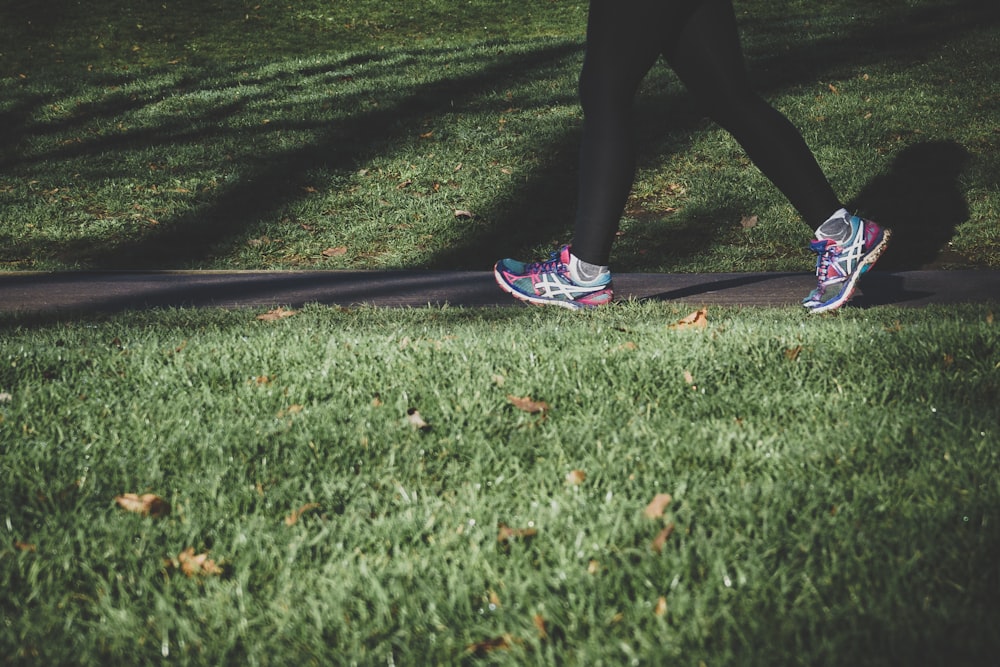目次
脳卒中片麻痺症例では快適歩行速度と最大歩行速度との差に着目
脳卒中片麻痺症例の歩行評価の中で理学療法士・作業療法士が評価することが多いのが歩行速度です.
歩行速度を測定する際には快適歩行速度と最大歩行速度のどちらか,もしくは両方を測定することが多いと思います.
今回は脳卒中片麻痺症例では快適歩行速度と最大歩行速度との差に着目すべきといったお話です.

今回ご紹介する論文
J Stroke Cerebrovasc Dis. 2021 Oct;30(10):106023. doi: 10.1016/j.jstrokecerebrovasdis.2021.106023. Epub 2021 Aug 7.
Comfortable and Maximum Gait Speed in Individuals with Chronic Stroke and Community-Dwelling Controls
Sara Vive 1, Cecilia Elam 2, Lina Bunketorp-Käll 3
Affiliations expand
PMID: 34375858 DOI: 10.1016/j.jstrokecerebrovasdis.2021.106023
今回ご紹介する論文は2021年に掲載された論文です.
研究の背景
Background: The relationship between maximum and comfortable gait speed in individuals with mild to moderate disability in the chronic phase of stroke is unknown.
脳卒中慢性期の軽度・中等度障害者における最大歩行速度と快適歩行速度の関係は不明であります.
研究の目的
Objective: This study examines the relationship between comfortable and maximum gait speed in individuals with chronic stroke and whether the relationship differ from that seen in a community-dwelling elderly population. Further, we investigate the influence of age, gender, time post-stroke and degree of disability on gait speed.
この研究では慢性期脳卒中症例における快適歩行速度と最大歩行速度の関係を調べ,その関係が地域在住の高齢者に見られるものと異なるかどうかを検討することを目的としております.
さらに年齢,性別,脳卒中後の経過時間,障害の程度が歩行速度に及ぼす影響についても検討することを目的としております.
研究の方法
Materials and methods: Gait speed was measured using the 10-meter walk test (10MWT) and the 30-meter walk test (30MWT) in 104 older individuals with chronic stroke and 154 community-dwelling controls, respectively.
脳卒中高齢者104例と地域住民154例を対象としてそれぞれ10m歩行試験(10MWT)と30m歩行試験(30MWT)を用いて歩行速度を測定しております.
研究の結果
Results: We found that the maximum gait speed in individuals with stroke could be estimated by multiplying the comfortable speed by 1.41. This relationship differed significantly from that of the control group, for which the corresponding factor was 1.20. In the stroke group, age, gender and time post-stroke did not affect the relationship, whereas the degree of disability was negatively correlated with maximum speed – but not when included in the multiple analysis. In the community-dwelling population, higher age and female gender had a negative relationship with maximum gait speed. When correcting for those parameters, the coefficient was 1.07.
脳卒中症例の最大歩行速度は,快適歩行速度に1.41を乗じることで推定できることが明らかとなりました.
この関連性は,対応する係数が1.20であった対照群とは有意に異なっておりました.
脳卒中群では,年齢,性別,脳卒中後の経過時間は関係性に影響を与えませんでしたが,障害の程度は最高速度に負の相関を示した(ただし,多重分析に含めた場合は影響しない).
地域住民集団では,年齢と性別が高いほど最大歩行速度と負の相関が認められました.
これらのパラメータで補正すると係数は1.07となりました.
研究の結論
Conclusions: The maximum gait speed in the chronic phase of stroke can be estimated by multiplying the individual’s comfortable gait speed by 1.41. This estimation is not impacted by age, gender, degree of disability and time since stroke. A similar but weaker relationship can be seen in the community-dwelling controls.
脳卒中慢性期における最大歩行速度は,快適歩行速度に1.41を乗じることで推定することができることが明らかとなりました.
この推定は,年齢,性別,障害の程度,脳卒中発症からの時間には影響されないことも明らかとなりました.
地域住民の対照群でも同様の関係が見られるが、弱いものでありました.
これは非常に興味深い結果ですね.
脳卒中片麻痺例は最大歩行速度は快適歩行速度の1.41倍,地域在住高齢者最大歩行速度は快適歩行速度の1.20倍となっております.
この結果から考えると脳卒中片麻痺症例は潜在能力を使い切れていない可能性がありますね.
転倒しないように快適歩行時に速度を落としているということになるでしょうか.






